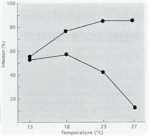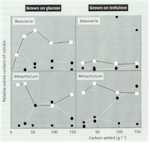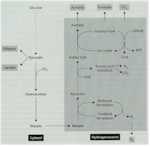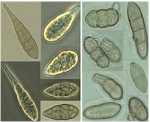..
CHAPTER 8: ENVIRONMENTAL CONDITIONS FOR GROWTH, AND TOLERANCE OF EXTREMES This chapter is divided into the following major sections:
SAMPLE TEXT: In common with all microorganisms, fungi are profoundly affected by physical and physicochemical factors, such as temperature, aeration, pH, water potential and light. These factors not only affect the growth rate of fungi but also can act as triggers in developmental pathways. In this chapter we consider the effects of environmental factors on fungal growth, including the extremes of adaptation to environmental conditions. TEMPERATURE AND FUNGAL GROWTH Microorganisms are often grouped into four broad categories in terms of their temperature ranges for growth: psychrophiles (cold-loving), mesophiles (which grow at moderate temperatures), thermophiles (heat-loving) and hyperthermophiles. A possible fifth category consists of psychrotolerant organisms, which can grow at low temperatures (at or below 5oC) but prefer more moderate temperatures. However, these categories mean different things when applied to different types of microorganism. For example, most fungi are mesophiles and relatively few can grow at or above 37oC (human body temperature) or even above 30oC, whereas many bacteria can grow at this temperature. The upper limit for growth of any fungus (or any eukaryote) is about 62oC. In contrast, some bacteria thrive at 70-80oC, and some archaea can grow at over 100oC, the current record being for the archaeon Pyrolobus fumarii, which is found around natural thermal vents and has a temperature optimum of 106o and a maximum of 113oC in culture. By convention, thermophilic fungi are defined as having a minimum growth temperature of 20oC or above, a maximum growth temperature of 50oC or above, and an optimum in the range of about 40-50oC. Haheshwari et al. (2000) provide updated information on the taxonomy and physiological features of the thermophilic fungi. The temperature ranges of three of these species are shown in Fig. 8.2 – Thermomyces lanuginosus, Chaetomium thermophile and Thermomucor pusillus. All three are very common in self-heating composts (Chapter 11) and can also be isolated from materials such as birds’ nests and sun-heated tropical soils. The fungus with the highest recorded growth temperature (62oC) is Thermomyces lanuginosus, which is very common in composts. However, far fewer than 100 thermophilic fungi have been described to date – an astonishingly low number, given the large number of habitats from which they can be isolated across the globe. This raises the question of whether different sampling approaches than those used to date might reveal new thermophilic species of biotechnological significance.
|
|||||||||||||||||||||||













